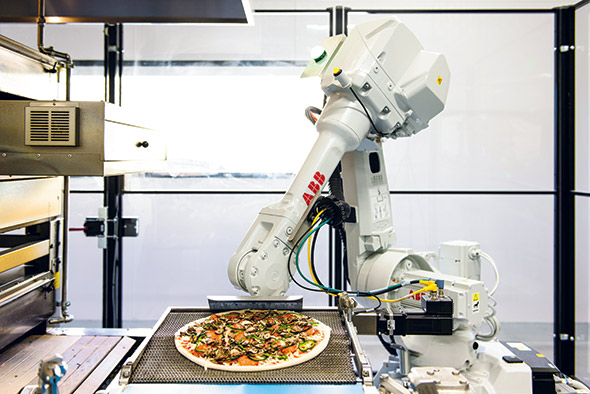Excerpt via FastCompany
Austin, Tx.-based Briggo is expanding its robot-staffed “Coffee Haus” to San Francisco’s busy airport. Briggo’s founders say they’ve created a tech-centric coffee ecosystem, complete with Latin American backstory, that hits Millennial touchstones including customization and app availability.
Briggo recently was listed among Fast Company’s 10 Most Innovative companies in the world for crafting a self-contained, robot-staffed 10-foot by 4-foot Coffee Haus selling everything from espresso to chai latte, with no human intervention. The automated coffee shop can produce a hundred specialty coffee drinks an hour, which we’ve been told competes with the three- or four-person coffee bar.
For certain, there’s been vending machine coffee for decades, including one that serves the familiar Nescafe brand. Some of it’s even actually drinkable.
“There’s so much going on in food and automation that is enabling consumers,” said Kevin Nater, Briggo’s president and chief executive. “We’re empowering people to create their perfect cup of coffee and then executing it with precision and consistency, giving them really the ultimate coffee experience with full control, remote ordering capability and consistency of execution.”
Takeaway: Machines like Briggo, “Flippy” and “Pepe” are being developed that make coffee, flip burgers and prepare pizza, respectively, thus mimicking the manual dexterity and precision required by a food handler to accomplish the same tasks. The cost of these advanced forms of technology continues to decline as well, making a solid business case amid mandated minimum wage hikes. Foodservice workers spend almost half their time doing tasks that have the capacity to be automated. Some industry analysts predict up to a third of all food prep jobs could be lost to automation by the year 2030.
The end result could be significantly fewer hands touching our food in the retail setting. Human hands have an instrumental role in contributing to risk of foodborne illness transmission and foodborne illness outbreaks.
At the end of the day, however, operators will need to carefully and skillfully apply the various benefits that automation, robotics and other futuristic technologies might deliver toward reaching one bottom-line objective: enhancing the guest experience in ways that consumers value. Ultimately, it’s about the customer.

